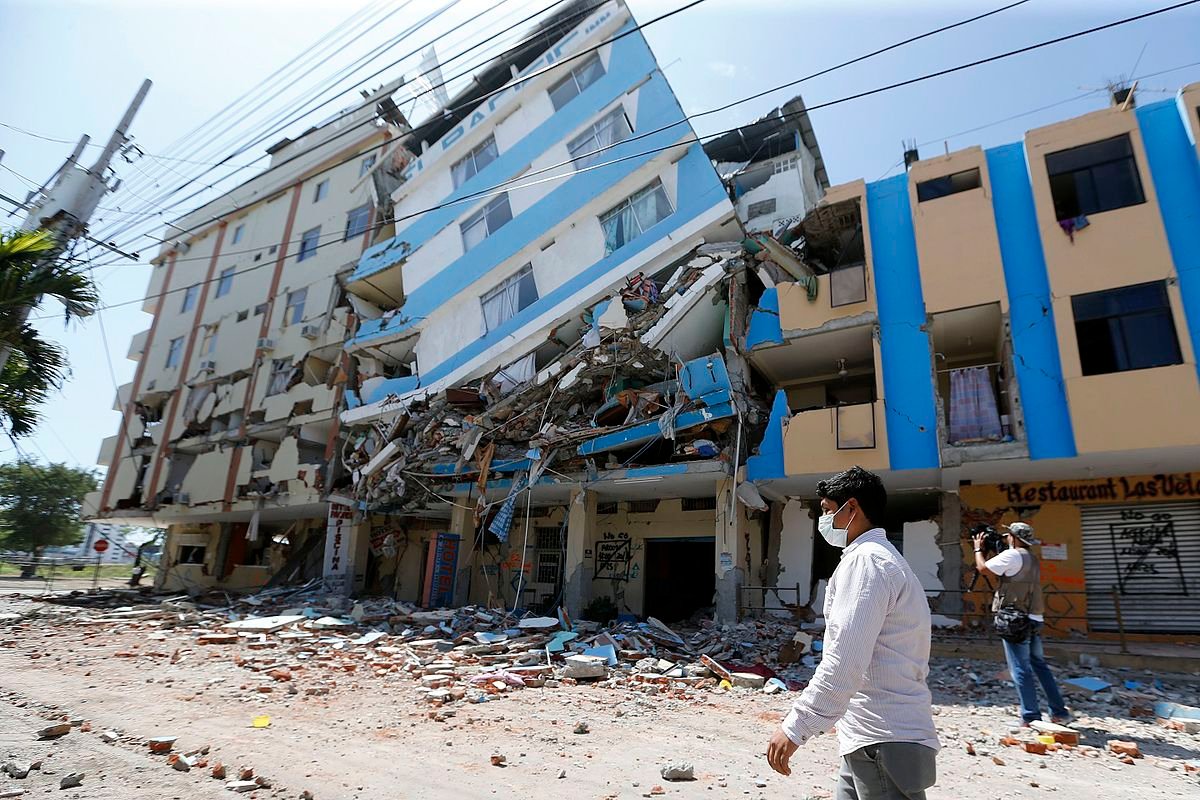A Nation Shaken:
In the early morning hours of April 23, 2025, the Ecuador seismic disaster struck the coastal provinces, jolting the nation awake with powerful tremors. The event disrupted lives and caused widespread destruction, raising alarms over disaster readiness and structural safety across affected regions.
Initial reports confirmed that collapsing buildings and falling debris injured at least 20 people.
This powerful seismic event triggered immediate responses from local and national authorities, highlighting the vulnerability of the region and the urgency of disaster preparedness.
Seismic activity is not uncommon in Ecuador, which lies along the Pacific Ring of Fire. The country has experienced numerous destructive earthquakes in the past. However, the latest tremor underscored persistent gaps in emergency infrastructure and urban resilience.
Understanding the Epicenter of the Ecuador Seismic Disaster
The United States Geological Survey (USGS) recorded the earthquake at a magnitude of 6.8, with the epicenter located near the town of Esmeraldas. The tremor struck at a depth of approximately 20 kilometers, intensifying its surface impact. Major cities, including Quito, Guayaquil, and Cuenca, felt the shaking, which caused widespread panic among residents.
USGS Official Earthquake Report
Within hours, videos showing swaying buildings, cracked roads, and people rushing outdoors inundated social media platforms.
The speed at which the quake unfolded left little time for structured evacuation, compounding the number of injuries.
Injuries and Emergency Response
Emergency services reported that 20 individuals suffered varying degrees of injury, including broken limbs and head trauma.
First responders immediately dispatched to affected zones, supported by the military and fire brigades. They set up temporary medical stations in open spaces to treat victims quickly and efficiently.
President Daniel Noboa issued a national emergency declaration and urged citizens to remain vigilant while authorities assessed damage and coordinated relief.
Structural Damage from the Ecuador Seismic Disaster Across Provinces
Several public and private buildings sustained significant structural damage. In Esmeraldas, multiple residential complexes were partially collapsed, displacing hundreds of families. Schools and hospitals reported broken windows, wall fissures, and ceiling collapses.
Infrastructure disruptions included ruptured water pipelines, damaged electrical grids, and road blockages caused by landslides and debris. The Ecuador Ministry of Public Works estimated the cost of preliminary repairs to exceed $200 million.
Displacement and Shelter Efforts
In total, over 1,200 people were temporarily displaced. Community shelters were quickly established in schools and sports centers, where humanitarian organizations such as the International Federation of Red Cross and Red Crescent Societies (IFRC) distributed food, blankets, and hygiene kits.
Volunteers played a key role in organizing shelter activities and offering psychological first aid to traumatized families. Social workers emphasized the need for long-term mental health services, especially for children affected by the chaos.
Emotional Impact of the Ecuador Seismic Disaster on Mental Health
Beyond physical injuries, the psychological toll of the Ecuador earthquake has been significant. Reports of anxiety, insomnia, and post-traumatic stress were common in affected communities. The Ministry of Health launched mobile counseling units staffed with psychologists and crisis counselors to offer immediate support.
Educational programs are being introduced in schools to help students process their experiences through art, group discussions, and structured coping strategies. These efforts are critical in promoting emotional resilience.
Social Media Response During the Ecuador Quake
Platforms such as Twitter and Facebook became vital channels for information dissemination during and after the quake. Government agencies used these platforms to issue real-time updates on emergency contacts, road closures, and aftershock warnings.

Hashtags like #EcuadorEarthquake and #PrayForEcuador went viral, drawing international attention and generating financial aid campaigns. Influencers and celebrities helped amplify local donation efforts, significantly boosting resource availability.
Seismic Vulnerability: Lessons from the Past
Ecuador’s location along tectonic boundaries places it at frequent risk of seismic events. The devastating 2016 earthquake, which claimed over 600 lives, prompted initial reforms in building codes and emergency planning. However, enforcement has remained inconsistent, particularly in rural areas.
Experts from the Geophysical Institute of Ecuador (IGEPN) have called for updated seismic hazard maps and the implementation of real-time early warning systems.
The Road to Recovery: Government and International Aid
Recovery will be a long and complex process. The Ecuadorian government has pledged to fast-track reconstruction projects, prioritize funding for resilient infrastructure, and collaborate with global development agencies.
The World Bank and UNDP are expected to assist with financial grants and technical expertise to rebuild schools, hospitals, and transportation networks.
Community Solidarity and Local Initiatives
Grassroots initiatives have surged in the wake of the Ecuador earthquake. Community kitchens, clothing drives, and donation centers have been established across cities to support those most affected. University students, religious groups, and local businesses have offered their facilities and manpower to aid in recovery efforts.
This outpouring of solidarity underscores the strength and unity of Ecuadorians during times of adversity.
Final Reflections: Rebuilding Stronger
The recent Ecuador earthquake has left scars both visible and invisible. Yet, it has also reignited discussions around disaster resilience, policy reform, and community engagement. With strategic action, transparent governance, and international support, Ecuador has an opportunity to rebuild not only its infrastructure but also its social fabric.
While challenges remain, the courage and collaboration witnessed in these difficult times offer a powerful narrative of hope and determination.







